Princess Stéphanie of Belgium
Princess Stéphanie of Belgium (21 May 1864 – 23 August 1945), a Belgian princess by birth, became Crown Princess of Austria through her marriage to the heir-apparent of the Habsburg dynasty, Archduke Rudolf. She was famously widowed in 1889 when Rudolf and his mistress, Mary Vetsera, were found dead in an apparent murder-suicide pact at the Imperial hunting lodge at Mayerling in the Vienna Woods.
| Princess Stéphanie | |||||
|---|---|---|---|---|---|
| Crown Princess of Austria, Hungary and Bohemia Princess Lónyay de Nagy-Lónya et Vásárosnamény | |||||
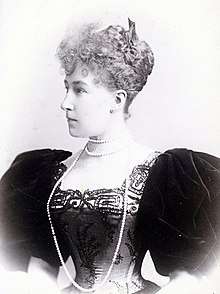 | |||||
| Born | 21 May 1864 Royal Castle of Laeken, Laeken, Brussels, Belgium | ||||
| Died | 23 August 1945 (aged 81) Pannonhalma Archabbey, Pannonhalma, Hungary | ||||
| Burial | |||||
| Spouse | Elemér, Prince Lónyay de Nagy-Lónya
( m. 1900) | ||||
| Issue | Archduchess Elisabeth Marie | ||||
| |||||
| House | Saxe-Coburg and Gotha | ||||
| Father | Leopold II of Belgium | ||||
| Mother | Marie Henriette of Austria | ||||
| Religion | Roman Catholicism | ||||
Her grandfather Leopold I of Belgium was the country's first king. Her aunt, Charlotte of Belgium, the future ill-fated Empress of Mexico, was married to Maximilian, the brother of her future father-in law, the Austrian Emperor Franz Joseph.
Early life
Stéphanie Clotilde Louise Herminie Marie Charlotte was born at the Royal Palace of Laeken in the Kingdom of Belgium. Her mother, Queen Marie Henriette, was an Archduchess of Austria by birth and aunt to the Queen of Spain. Her father, Leopold II of Belgium, finally became King of the Belgians in December 1865. The royal couple were ill-suited for each other and had an unhappy marriage. The contradictory Leopold II was serious and delicate. Marie Henriette was undisciplined, outspoken, and boisterous. Leopold was openly abrasive to her, and tried to dominate her with his criticisms and frequent infidelity. While her natural charm made Marie Henriette more popular with her Belgian subjects than her husband, she eventually retired from court life to escape him, and lived the rest of her life in Spa near the Ardennes.[1]
Leopold had little interest in Stéphanie and her older sister Princess Louise, and the education of his daughters was neglected as he focused all his doting attention on his son, Prince Léopold, Duke of Brabant, the future of the Saxe-Coburg and Gotha dynasty in Belgium. Tragically, when he was nine Prince Leopold caught pneumonia and died. His father never recovered. He reconciled briefly with Marie Henriette solely in the hope of producing another male heir, but the result was the birth of Princess Clémentine in 1872. Leopold thereafter lost interest in his family. He turned his attentions to the notorious creation of the Congo Free State, which was his personal fiefdom and not a Belgian colonial territory, and as such its ruthless exploitation amassed him a vast private fortune.[2] Leopold also rejected his family for his mistresses; he had so many scandalous liaisons that he was known to his subjects as Le Roi des Belges et des Belles (“The King of the Belgians and of the Beauties”). In 1909, on his deathbed, he married his favorite mistress in an attempt to expunge the sin of infidelity.[1]
Crown Princess of Austria
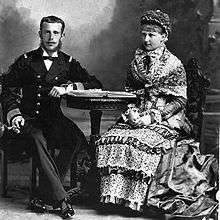
Engagement
Brought up in the unhappy life that was the product of their parents' arranged marriage, Stéphanie and her sister did no better in their own. Louise married her second cousin, Prince Philipp of Saxe-Coburg, a harsh man who was fourteen years her senior. After she eloped with her lover, Leopold had her committed to a mental asylum. She was finally granted a divorce in 1907.
In March 1880, Rudolf, Crown Prince of Austria was invited to the Belgian court at the insistence of Leopold II. Rudolf arrived in Brussels on 5 March. After meeting the fifteen-year-old Princess Stéphanie, he wrote to his mother, Empress Elisabeth that "[he had] found what [he] sought," noting that she was "pretty, good, [and] clever". Having refused Princess Mathilde of Saxony, as well as several Infantas of Portugal and Spain, he found that Stéphanie was one of the few available Catholic princesses in Europe. Under pressure by his parents to marry as soon as possible, the Crown Prince was satisfied with her and by the 7th of March, he asked for her hand and announced their engagement.
Rudolf's mother was deeply disappointed with the match as the Belgian monarchy dated only from 1830 and did not compare to the Habsburgs in terms of seniority, even though its royal house was a branch of that of Saxony (one of the oldest ruling houses in Europe). Rudolf's father was pleased, however, and approved the marriage.
Wedding
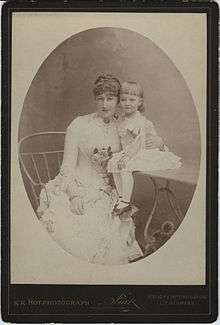
Stéphanie was despatched to Vienna to be taught Imperial court etiquette in preparation for her marriage but a month after her arrival, the ladies-in-waiting realized that she had not yet reached puberty. When the obvious questions were put to her, it became clear that she had no idea what was meant; she had been left completely ignorant of the facts of life. The wedding had to be postponed, and the humiliated girl was sent back to Belgium for a time.[3]
The emperor bestowed Walthere Frere-Orban the grand Cross of Saint-Stephen and the Empress bestowed multiple Ladies the honour of the Starry Cross.[4]
On 10 May 1881, a little over a week before her seventeenth birthday, Princess Stéphanie of Belgium married the Crown Prince in the Saint Augustine's Church in Vienna. Her parents walked her down the aisle. Among the illustrious attendees were the future King Edward VII of the United Kingdom and his nephew, the future German Emperor Wilhelm II. The nuptials were celebrated lavishly throughout Austria, and the Austrian astronomer Johann Palisa named asteroid 220 Stephania in her honour in 1881. After the ceremony, the couple honeymooned at Laxenburg outside the capital. On 18 May the couple was welcomed in Budapest.[5]
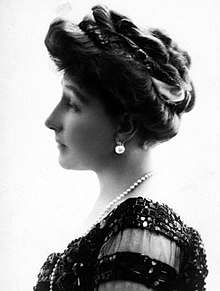
Crown Princess
The marriage was happy at first, but difficulties reportedly developed. Though intelligent, Rudolf was highly strung, unconventional, impulsive and very liberal, while Stéphanie's very conservative upbringing left her conventional, formal, and reactionary. Their only child, Archduchess Elisabeth Marie of Austria, was born at Laxenburg Castle on 2 September 1883. She was known within the family as "Erzsi," short for "Erzsébet," the Hungarian form of "Elisabeth."
Stephanie received little support from the Imperial family during her marriage. Empress Elisabeth avoided Stéphanie and disdained her, believing her to be an inadequate match for her son. The relationship between Stephanie and Rudolf broke down quickly. In 1886, Rudolf infected Stephanie with gonorrhea[6] which made further pregnancies impossible, and they reportedly discussed divorce. Both began to seek consolation outside their marriage. During a visit to Galicia (presently, a region divided between Poland and Ukraine) in 1887, Stéphanie fell in love with a Polish Count. During the next eighteen months, she did not try to hide her affections for the count from her husband, who continued his own liaisons.[7]
In 1889 Rudolf and Baroness Mary Vetsera, his lover, were found dead. Their murder-suicide pact is known as the Mayerling incident.
Later life
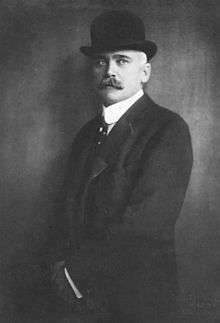
Stéphanie married again on 22 March 1900 at Miramare. The groom was Prince Lónyay de Nagy-Lónya et Vásárosnamény (Bodrogolaszi, 24 August 1863 - Budapest, 20 July 1946), a Hungarian nobleman of unequal rank who, in 1917, was elevated by the Emperor of Austria to the rank of Fürst. Her father was so furious at the marriage that he forbade Stéphanie to see her dying mother.[8]
She settled with her new husband in his castle Oroszvár - Rusovce in western Hungary, modern-day Slovakia, until the advancing Red Army forced them to flee their estate. They found sanctuary in Pannonhalma Archabbey, near Györszentmárton, Hungary.
In 1935 she wanted to publish her memoir to set the record straight, but this caused a scandal and a court forbade their distribution. Police visited every bookshop in Vienna in order to seize the copies already on sale.[9] In it she published Rudolf's last letter to her, and proclaimed that (in her view) he and the Baronness had made a suicide pact.[9] Her memoir was eventually published outside of Austria in 1937 as Ich sollte Kaiserin werden (I Was To Be Empress).[10]
Stéphanie died at Pannonhalma on 23 August 1945. Her only child, Archduchess Elisabeth Marie of Austria, had four children:
- Prince Franz Joseph of Windisch-Graetz
- Prince Ernst of Windisch-Graetz
- Prince Rudolph of Windisch-Graetz
- Princess Stephanie of Windisch-Graetz
Invention
As the New York Times noted, Stéphanie "invented a new chafing dish and spirit lamp combined, and [took] out patents in England, France, Germany, Italy, and Belgium." [11] Her 1908 decision to take out a US patent on a chafing dish surprised the New York Times, not because of her lineage but because "throughout Europe the proficiency of Columbia’s daughters with the chafing dish is traditional…."[11]
Titles, styles and honours
Titles and styles
- 21 May 1864 – 10 May 1881: Her Royal Highness Princess Stéphanie of Belgium
- 10 May 1881 – 30 January 1889: Her Imperial and Royal Highness The Crown Princess of Austria, Hungary, Bohemia and Croatia
- 30 January 1889 – 22 March 1900: Her Imperial and Royal Highness The Dowager Crown Princess of Austria, Hungary, Bohemia and Croatia
- 22 March 1900 – 9 February 1917: Her Royal Highness Princess Stéphanie, Countess Elemér Lónyai de Nagy-Lónya
- 9 February 1917 – 23 August 1945: Her Royal Highness Princess Elemér Lónyai de Nagy-Lónya
Honours
.svg.png)
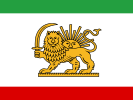
.svg.png)
.svg.png)
Additionally, Stéphanie was born with the titles of Princess of Saxe-Coburg and Gotha and Duchess of Saxony. During her marriage to Rudolf, she was also the Crown Princess of Austria, Hungary and Bohemia. After his death she retained the title of Archduchess of Austria and also held the title of Dowager Crown Princess until her marriage to Count Elemér Lónyai de Nagy-Lónya.
Ancestry
| Ancestors of Princess Stéphanie of Belgium |
|---|
Portrayal on screen and stage
- Terence Young's 1968 film Mayerling - Portrayed by Andrea Parisy
- Kenneth MacMillan's 1978 ballet, Mayerling
- Frank Wildhorn's 2008 Musical, Rudolf The Mayerling Affair - Portrayed by Wietske Van Tongeren
- Kronprinz Rudolf film directed by Robert Dornhelm (2006) in two parts
- The 1974 British television series Fall of Eagles - Portrayed by Susan Tracy in the episode "Requiem for a Crown Prince"
See also
- Lake Stefanie
- Stephanie's Astrapia
- Astrapia
References
- Aronson, Theo, The Coburgs of Belgium, Cassell & Company Ltd., 1968
- Hochschild, Adam, King Leopold's Ghost: A Story of Greed, Terror, and Heroism in Colonial Africa, Mariner Books, 1999
- Schiel, Irmgard. Stephanie. Kronprinzessin im Schatten von Mayerling. Stuttgart: Deutsche-Verlags Anstalt, 1978.
- Handelsblad (Het) 07-05-1881
- Handelsblad (Het) 19-05-1881
- King, Greg; Woolmans, Sue (3 September 2013). "Prologue". The Assassination of the Archduke: Sarajevo 1914 and the Romance That Changed the World. St. Martin's Press. p. 6. ISBN 9781250038678.
- Palmer, Alan Warwick (1997). Twilight of the Habsburgs: The Life and Times of Emperor Francis Joseph. Atlantic Monthly Press. p. 249. ISBN 9780871136657.
- "Count Lonyay". Daily Herald (Adelaide). 5 May 1917. p. 3.
- "Royal Suicide: Widow's Memoir Banned". Morning Bulletin (Rockhampton, Queensland). 5 December 1935. p. 10. Retrieved 27 June 2019.
- Stephanie, Princess of Belgium, 1864-1945. (1937). I was to be empress. I. Nicholson & Watson. OCLC 1709048.CS1 maint: multiple names: authors list (link)
- "COUNTESS LONYAY INVENTOR.; Patents a Combination of Chafing Dish and Lamp -- To be Put on Market". New York Times. Vienna. March 17, 1908.
- Hof- und Staats-Handbuch der Österreichisch-Ungarischen Monarchie (1882), Genealogy p. 4
- Bragança, Jose Vicente de (2014). "Agraciamentos Portugueses Aos Príncipes da Casa Saxe-Coburgo-Gota" [Portuguese Honours awarded to Princes of the House of Saxe-Coburg and Gotha]. Pro Phalaris (in Portuguese). 9–10: 11. Retrieved 28 November 2019.
- "Real orden de Damas Nobles de la Reina Maria Luisa". Guía Oficial de España (in Spanish). 1887. p. 166. Retrieved 21 March 2019.